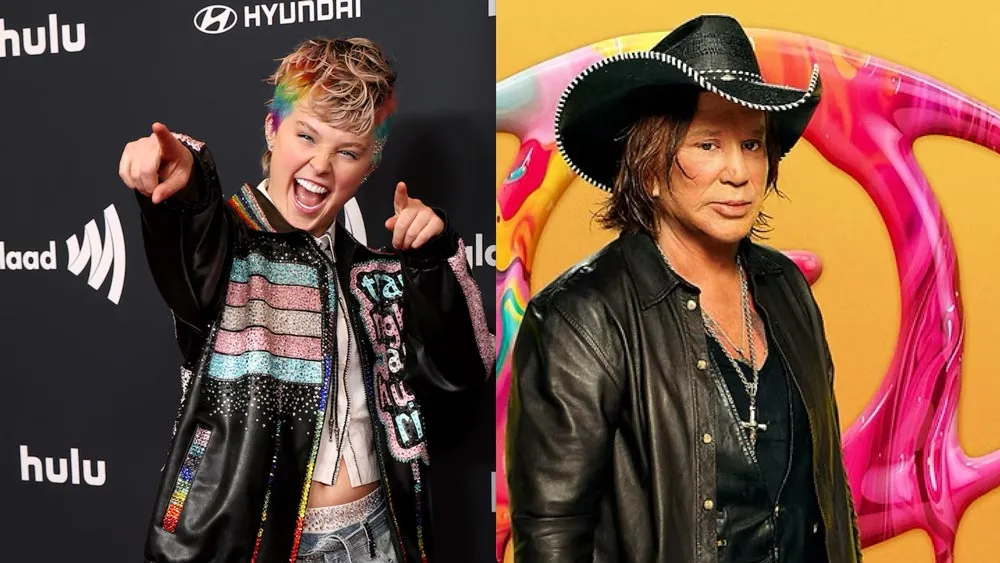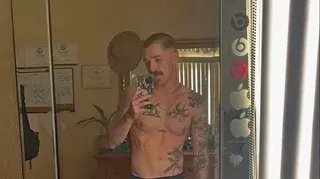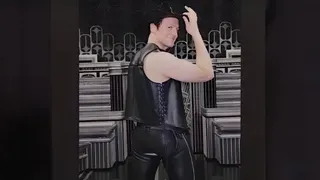October 11, 2013
A Look Back at 10 of the Most Iconic 'Gay' Films
Kilian Melloy READ TIME: 4 MIN.
There are films about gay history (Milk), and there are historic gay films (Brokeback Mountain). Both should be celebrated in Gay History Month.
While there are many reasons why a film is "classic," these ten titles (listed alphabetically) are of historical cinematic importance - either because they were groundbreaking, award-winning, or the first film to depict a particular aspect of queer life for mass audiences. In some cases, they are all of the above. This is my no means a definitive list, but certainly a good primer on getting one's gay film history straight.
The Boys in the Band (1970) Mart Crowley's landmark 1968 play became a landmark 1970 film directed by William Friedkin. Featuring an all-male cast, the film's eight gay men plus one guest celebrate a birthday party that is anything but a happy experience. The dialogue is crisp ("Show me a happy homosexual, and I'll show you a gay corpse") and witty ("Who do you have to fuck to get a drink around here?"). And the performances are terrific (the cast first performed together on stage). If "The Boys in the Band" is a bit dated today, the film is key to "the evolution of gay and lesbian history and culture," according to Clayton Robey, whose fine 2011 documentary "Making the Boys" chronicles Crowley's success.
Brokeback Mountain (2005) Perhaps no other film in the history of cinema has achieved the crossover success of "the gay cowboy film." Starring Jake Gyllenhaal and the late Heath Ledger (in one of the most remarkable performances in queer film history) as lovers who try to deal with their feelings towards one another in the repressed West of the 1960s-1980s, this tearjerker is one of the great romantic dramas of all time - gay or otherwise.
Cabaret (1972) It is hard to believe "Cabaret" is more than 40 years old, but this fantastic Bob Fosse directed musical still holds up. Liza Minnelli gives an indelible, Oscar-winning performance as Sally Bowles, the singer at the Kit-Kat club (where most of the songs are performed). She falls in love with bisexual Brian (Michael York) while the Nazis take over Germany. The Kander and Ebb songs are dark but catchy - "Maybe This Time" is especially great - and Joel Grey's notable turn as the Emcee won him an Oscar, too.
Cruising (1980) William Friedkin ("Boys in the Band") angered the queer community with this thriller starring Al Pacino as a cop going undercover in the gay S&M scene to ferret out a serial killer. While the film was subjected to protests during shooting and its theatrical release, much of the anxiety about the film was how it depicted the gay community. However, seen now, "Cruising" is a fascinating (if dated) character study with a provocative final scene.
While the film still may be somewhat offensive, it also deserves reconsideration. "Interior. Leather Bar.," made earlier this year by Travis Mathews and James Franco, attempted to "recreate" 40 lost minutes from Cruising with mixed results.
Midnight Cowboy (1969) The only X-rated film to win the Best Picture Oscar, "Midnight Cowboy" depicts the intense friendship between Joe Buck (Jon Voight), who wants to be a hustler, and Ratso Rizzo (Dustin Hoffman), a disabled con man. Queer British filmmaker John Schlesinger's New York-set film speaks volumes about being an outsider, as Joe and Ratso - two losers trying to survive against oppression - ably attest. The film has many outstanding sequences, from Joe's gay encounter with a young student (Bob Balaban) to a psychedelic party featuring Warhol superstars.
Philadelphia (1993) The first major theatrical release Hollywood made about the AIDS crisis, "Philadelphia" is memorable not just for Tom Hanks' Oscar-winning performance but for how it presented issues important to the queer community (such as hospital visitation rights and legal issues in the workplace). While some queer viewers complained there was barely a kiss between Hanks and Antonio Banderas (who played his lover), the film tackled an important topic well, and is a crucial film in the gay historical canon.
The Rocky Horror Picture Show (1975) The film itself is not particularly good, but the theatrical experience is what makes "The Rocky Horror Picture Show" a must-see. Brad (Barry Bostwick) and Janet (Susan Sarandon) have car trouble and enter the strange castle/world of Dr. Frank-N-Furter (Tim Curry), a sweet transvestite from Transsexual Transylvania. Music and mayhem ensue. And as Dr. Frank advises, "Don't dream it, be it."
Some Like it Hot (1959) This terrific cross-dressing comedy has Joe (Tony Curtis) and Jerry (Jack Lemmon) donning drag while on the run from the mob. Joining an all-female band, featuring singer Sugar Kane (Marilyn Monroe), the guys find being women helps them be better men - especially when Joe falls hard for Sugar, and Jerry is pursued by Osgood Fielding III (Joe E. Brown), who gets the hilarious final line. Full of slapstick, songs, and inspired silliness (Curtis pretending to be Cary Grant is quite amusing), "Some Like It Hot" was daring for its time, but forever fabulous.
The Times of Harvey Milk (1984) and Milk (2008) Rob Epstein's Oscar-winning documentary presented the charismatic Harvey Milk from his efforts to become the first openly gay elected official to public office in San Francisco, and his subsequent assassination. The story was also brilliantly told in Gus Van Sant's biopic, "Milk," almost 25 years later, which earned Oscars for Sean Penn and Dustin Lance Black, respectively, for their performance and script.
Seeing both films back to back, one can appreciate how accurate Van Sant was in capturing the era and scenes right out of the doc, and both films deftly incorporated archival footage. "Times" and "Milk" are essential queer history titles; both emphasize its subject's call to GLBT folks to come out and be heard.
Word Is Out (1977) The remarkable "Word is Out" was the first full-length documentary by queer filmmakers about queer subjects. The profiles consist of twenty-six gay men and women from a cross-section of the queer community. While these individuals have only sexual orientation in common, their poignant, emotionally charged portraits about when they knew they were gay speak to more universal experiences. The film may seem like something from a time capsule now, but it's an important part of gay cinema history.
Kilian Melloy serves as EDGE Media Network's Associate Arts Editor and Staff Contributor. His professional memberships include the National Lesbian & Gay Journalists Association, the Boston Online Film Critics Association, The Gay and Lesbian Entertainment Critics Association, and the Boston Theater Critics Association's Elliot Norton Awards Committee.





